Your cart is currently empty!
Search results for: “71”
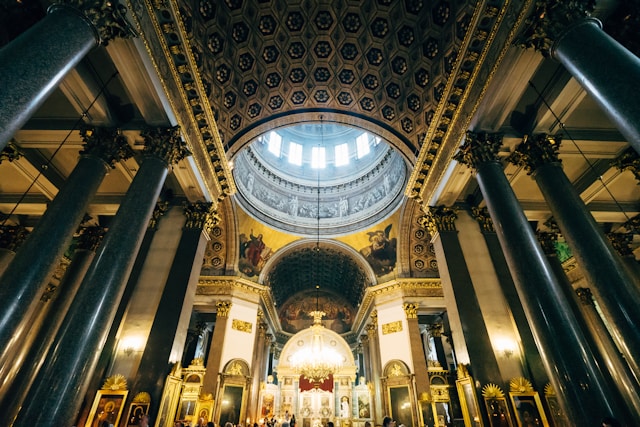
Discover the Kim Burrell Church: A Haven of Praise, Worship, and Empowerment
Introduction
Kim Burrell Church is a thriving Christian community in Houston, Texas, led by the renowned gospel singer and minister, Kim Burrell. Known for its passionate worship, inspiring messages, and community outreach, the church has become a beacon of hope and empowerment for thousands of believers.
A Legacy of Praise and Worship
Kim Burrell’s Anointed Voice
Kim Burrell’s extraordinary vocal abilities have captivated audiences worldwide. Her powerful voice, soaring melodies, and heartfelt lyrics have earned her numerous awards and accolades. Her music has inspired countless souls and brought a deeper connection with God.
Dynamic Worship Experiences
The worship services at Kim Burrell Church are transformative and uplifting experiences. The congregation enthusiastically participates in vibrant singing, fervent prayer, and dynamic preaching. The atmosphere is electric as the Holy Spirit moves and anoints the worshipers.
Biblical Teachings and Empowerment
Sound Doctrinal Foundation
Kim Burrell Church adheres to a strong biblical foundation. Pastor Burrell and her team meticulously study the scriptures and deliver sermons that are both theologically sound and transformative. The congregation is taught practical principles for daily living, personal growth, and spiritual maturity.
Empowering Ministry
Empowerment is a central theme at Kim Burrell Church. Through workshops, mentorship programs, and community initiatives, the church equips its members to fulfill their God-given potential. They are encouraged to discover their spiritual gifts, pursue their passions, and make a positive impact on the world.
Community Outreach and Social Justice
Serving the Needy
Kim Burrell Church actively reaches out to those in need in the community. Through food pantries, clothing drives, and community outreach programs, the church provides tangible support to the less fortunate. They demonstrate the love of Christ by serving those who are hurting.
Social Justice Initiatives
The church also takes a vocal stance on social justice issues. Pastor Burrell and her team speak out against injustice, racism, and inequality. They advocate for peace, unity, and equal rights for all.
Membership and Involvement
Joining the Congregation
Becoming a member of Kim Burrell Church involves a commitment to Jesus Christ, a willingness to serve others, and a desire for spiritual growth. The church provides opportunities for connection and involvement through various ministries, small groups, and volunteer opportunities.
Getting Involved
There are numerous ways to get involved at Kim Burrell Church:
- Join a worship team
- Volunteer in a ministry
- Participate in small groups
- Serve in the community
Location and Contact Information
Kim Burrell Church is located at: 8310 W Tidwell Rd, Houston, TX 77040
Phone: (713) 937-7172
Website: www.kimburrellchurch.orgConclusion
Kim Burrell Church is a vibrant and empowering Christian community that offers a welcoming and nurturing environment for spiritual growth, worship, and service. Through its passionate worship, sound biblical teachings, and community outreach, the church makes a significant impact in the lives of its members and the surrounding community. Whether you are seeking a spiritual home or looking for a place to serve, Kim Burrell Church is a beacon of hope and a transformational force in the lives of believers.
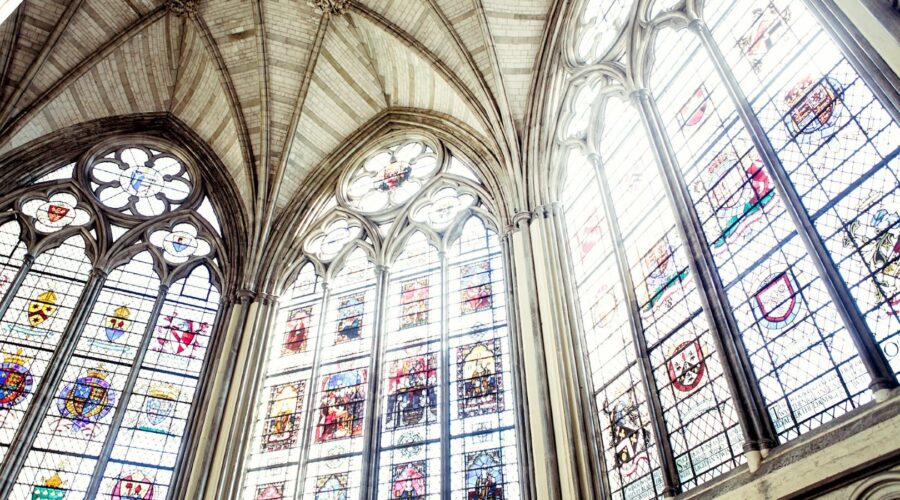
Unveiling the Charismatic Evangelist: Joshua Mills’s Journey and Impact
Introduction
Joshua Mills, a renowned American evangelist, has captivated audiences worldwide with his dynamic preaching and unwavering faith. His charismatic nature, coupled with a profound understanding of the Gospel, has ignited spiritual awakenings and transformed countless lives.
Early Life and Calling
Born in 1971 in Pennsylvania, Mills grew up in a Christian household. At a young age, he experienced a profound encounter with the Holy Spirit that ignited a passion for evangelism. After graduating from high school, he pursued theological studies and began serving in various church ministries.
Missionary Work in Africa
In the early 1990s, Mills embarked on a missionary journey to Africa. During his time there, he witnessed firsthand the transformative power of the Gospel in impoverished communities. This experience left an indelible mark on his heart and shaped his commitment to global outreach.
Evangelistic Ministry
Upon returning to the United States, Mills founded Joshua Mills Ministries, an organization dedicated to spreading the Good News of Jesus Christ. Through large-scale evangelistic crusades, international conferences, and media appearances, he has reached millions with the message of salvation.
Dynamic Preaching Style
Mills is renowned for his captivating preaching style. His sermons are characterized by a blend of passionate oratory, scriptural insights, and personal anecdotes. He effectively uses storytelling, humor, and practical applications to make the Gospel accessible and relatable.
Emphasis on Spiritual Revival
A key focus of Mills’s ministry is spiritual revival. He believes that true revival requires both individual repentance and a collective outpouring of the Holy Spirit. Through his messages, he encourages believers to seek a deeper relationship with God and to become instruments of transformation in their communities.
Global Outreach
Mills’s evangelistic impact extends far beyond the United States. He has conducted crusades in over 100 countries, spreading the Gospel to diverse cultures and languages. His ministry has played a significant role in planting churches, equipping leaders, and fostering unity among Christian denominations.
Partnerships and Collaborations
Mills collaborates with various organizations and ministries to amplify his global reach. These partnerships include:
- Global Evangelism Alliance
- Mission America Coalition
- International Church of the Foursquare Gospel
Controversy and Criticism
As with any public figure, Mills has faced some criticism and controversy. Some have questioned the size and accuracy of his conversion statistics, while others have criticized his financial practices. However, despite these challenges, Mills continues to inspire and impact countless lives through his unwavering belief in the power of the Gospel.
Conclusion
Joshua Mills is a remarkable evangelist whose charismatic preaching and tireless efforts have ignited spiritual awakenings and transformed countless lives across the globe. His unwavering faith, dynamic preaching style, and emphasis on global outreach have made him a leading voice in contemporary Christian ministry. Through his crusades, conferences, and media appearances, Mills continues to spread the Good News of Jesus Christ and inspire believers to live a life of purpose and impact.
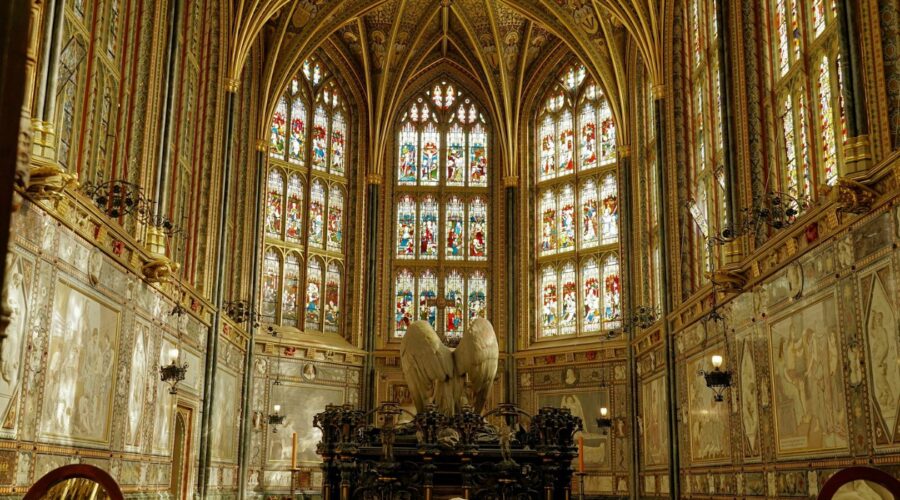
Discover the Majestic Grandeur of St. Paul’s Cathedral: An Architectural Masterpiece
Introduction
Nestled majestically in the heart of the City of London, St. Paul’s Cathedral stands as a timeless symbol of architectural brilliance. Its stunning dome, towering spires, and exquisite interior have captivated hearts and inspired awe for centuries. In this comprehensive guide, we embark on a journey to uncover the captivating history, intricate design, and enduring significance of this iconic cathedral.
Historical Overview
Origins and Construction
The origins of St. Paul’s Cathedral can be traced back to the 7th century, when a wooden church was erected on Ludgate Hill. Over the centuries, successive iterations of the cathedral were built, including a Romanesque basilica and a Gothic structure. The current cathedral, designed by Christopher Wren after the Great Fire of London in 1666, was constructed over a period of 35 years, from 1675 to 1710.
Sir Christopher Wren’s Vision
Sir Christopher Wren, the renowned architect behind St. Paul’s Cathedral, envisioned a masterpiece that would rival the great cathedrals of Europe. Inspired by the Italian Renaissance and Baroque styles, Wren designed a majestic structure with a central dome and two flanking towers.
Architectural Marvel
The Dome
The centerpiece of St. Paul’s Cathedral is its magnificent dome, one of the largest in the world. Standing at 111 meters (365 feet), the dome is double-shelled, with an outer dome visible from afar and an inner dome that creates an awe-inspiring interior space.
Whispering Gallery
Beneath the outer dome lies the Whispering Gallery, an acoustic wonder where a whisper uttered against the wall can be heard clearly on the opposite side of the dome, over 30 meters away.
Stone Gallery and Golden Gallery
External galleries, including the Stone Gallery and Golden Gallery, offer breathtaking panoramic views of London.
Interior Grandeur
The interior of St. Paul’s Cathedral is equally impressive, featuring a vast nave, soaring transepts, and an exquisite high altar.
Cultural and Ecclesiastical Significance
National Symbol
St. Paul’s Cathedral has served as a national symbol for centuries, hosting royal weddings, funerals, and other significant events in British history.
Religious Centerpiece
As the seat of the Bishop of London, St. Paul’s Cathedral remains an active place of worship and a spiritual haven for the Anglican Communion.
Historical Events
The cathedral has witnessed numerous historical events, including the signing of the Magna Carta in 1215 and the funeral of Lord Nelson in 1805.
Visiting St. Paul’s Cathedral
Practical Information
- Address: St. Paul’s Churchyard, London EC4M 8AD
- Opening Hours: Monday-Saturday 8:30 am – 4:30 pm, Sunday for worship
- Admission Fees: Vary depending on the level of access desired
Tips for Visitors
- Book tickets in advance to avoid queues, especially during peak season.
- Allow plenty of time to explore the cathedral, as there is much to see and admire.
- Consider guided tours to delve deeper into the history and architecture.
- Dress respectfully, as the cathedral is an active place of worship.
Accessibility
St. Paul’s Cathedral strives to be accessible to all visitors. There is level access to the cathedral floor and limited wheelchair access to the Whispering Gallery and Stone Gallery.
Conclusion
St. Paul’s Cathedral is an architectural masterpiece that has stood the test of time. Its majestic dome, intricate interior, and enduring significance have placed it among the most iconic and beloved landmarks in the world. Whether you are a history buff, an architecture enthusiast, or simply seeking spiritual inspiration, a visit to St. Paul’s Cathedral is an unforgettable experience that will leave you in awe.
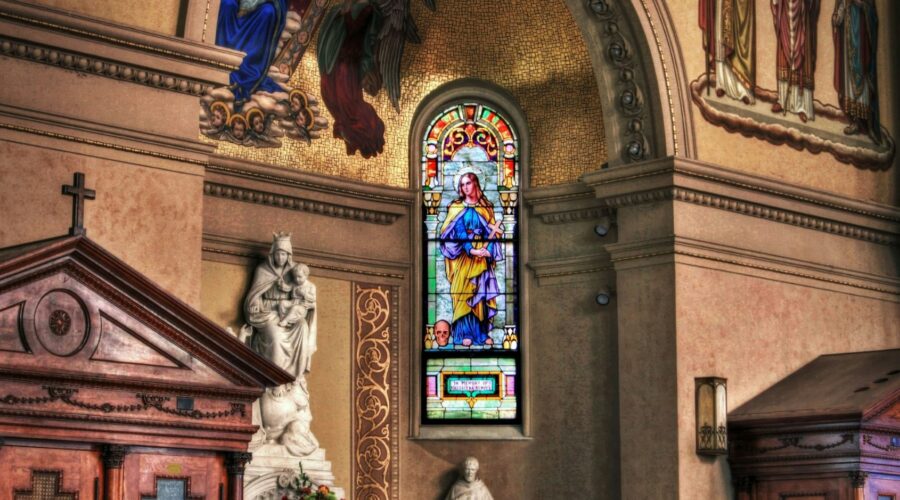
Unveiling the Divine Abode: A Comprehensive Guide to St. Charbel Church
St. Charbel Church, a testament to faith and spiritual enlightenment, stands as a beacon of hope and tranquility in the bustling city. This sacred sanctuary, dedicated to the revered Saint Charbel Makhlouf, invites all to seek solace, guidance, and a deeper connection with the divine.
History and Significance
The genesis of St. Charbel Church can be traced back to the early 20th century. Inspired by the extraordinary life and miracles of Saint Charbel, a group of Lebanese immigrants embarked on a mission to establish a church in his honor. With unwavering determination and the support of their community, they laid the foundation stone in 1964.
The church’s construction was a labor of love, spanning several years. Every stone, every intricate mosaic, bears witness to the unwavering faith and dedication of its builders. Finally, in 1978, the church was consecrated and opened its doors to the public, becoming a spiritual haven for the Lebanese community and beyond.
Architectural Marvel
St. Charbel Church is an architectural masterpiece that seamlessly blends traditional Lebanese and modern elements. Its exterior facade, adorned with intricate carvings and colorful tiles, reflects the rich cultural heritage of its builders. The interior, vast and awe-inspiring, exudes an aura of serenity and grandeur.
Intricate Mosaics and Stained Glass
The church’s interior is adorned with breathtaking mosaics that depict biblical scenes and the life of Saint Charbel. These intricate artworks, created by skilled Lebanese artisans, add depth and vibrancy to the space. The stained glass windows, casting multicolored hues upon the congregation, create a mesmerizing atmosphere of reverence and contemplation.
Soaring Dome and Arched Ceilings
The centerpiece of the church is its majestic dome, reaching towards the heavens. Its intricate tilework and golden accents add a touch of opulence, while the arched ceilings create a sense of spaciousness that invites worshippers to feel the presence of the divine.
Holy Relics and Shrines
St. Charbel Church is not only a sanctuary for prayer but also the custodian of priceless holy relics and shrines.
Relics of Saint Charbel
The church houses a fragment of the relics of Saint Charbel, a tangible reminder of his earthly presence. These relics are displayed in a beautiful shrine, where devotees can pay homage and seek his intercession.
Shrine of Our Lady of Lebanon
Nestled within the church is a shrine dedicated to Our Lady of Lebanon. This sacred space features a statue of the Virgin Mary and is a popular destination for pilgrims seeking her blessings and protection.
Devotional Practices and Services
St. Charbel Church is a dynamic hub for spiritual growth and community engagement. Regular masses, devotions, and prayer services provide opportunities for worshippers to deepen their faith and connect with fellow believers.
Divine Liturgy
The heart of the church’s liturgical life is the Divine Liturgy, celebrated daily and on Sundays. This sacred service, rooted in the Eastern Christian tradition, includes readings from Scripture, prayers, and the reception of Holy Communion.
Novenas and Devotions
St. Charbel Church hosts regular novenas and devotions dedicated to various saints and feast days. These special services provide a time for focused prayer, intercession, and spiritual reflection.
Community Outreach
Beyond its liturgical practices, St. Charbel Church is actively involved in serving the community. Through outreach programs, the church provides support to the needy, promotes interfaith dialogue, and fosters a spirit of love and unity.
Visiting St. Charbel Church
Visiting St. Charbel Church is an enriching experience that offers a glimpse into the heart of the Lebanese Catholic community. Here are some practical details to help you plan your visit:
Location and Contact Information
* Address: 6202 Broadway St, Brooklyn, NY 11206
* Phone: (718) 282-5295
* Email: [email protected]Mass and Service Times
* Check the church’s website or contact them directly for the most up-to-date mass and service times.
Parking
* Limited street parking is available around the church, but it is advisable to consider public transportation or ride-sharing services for convenience.
Dress Code
* While a specific dress code is not enforced, visitors are encouraged to dress respectfully, covering their shoulders and knees.
Accessibility
* The church is wheelchair accessible and provides ramps and elevators for ease of access.
As you step into the hallowed halls of St. Charbel Church, prepare to be enveloped in an atmosphere of peace, reverence, and spiritual enlightenment. May your visit be filled with blessings, guidance, and a renewed connection to the divine.
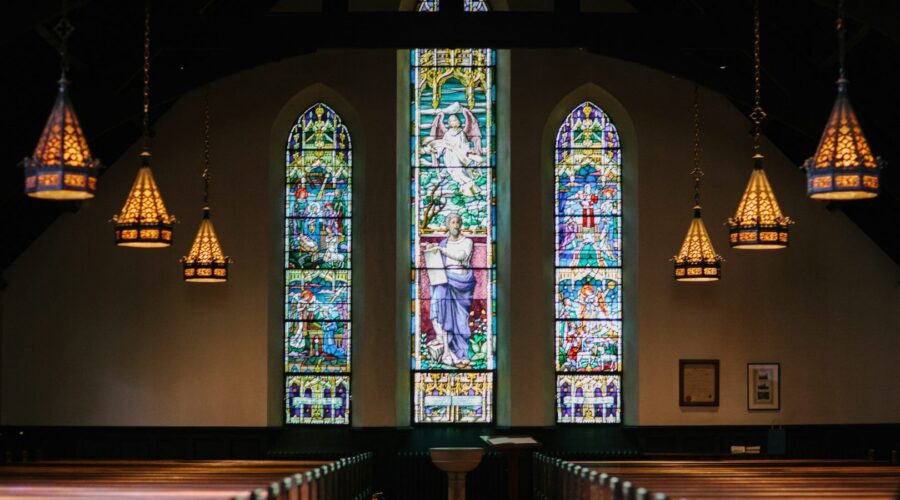
Discover the Rich History and Significance of St. Pius Church: A Comprehensive Guide
Introduction
St. Pius Church stands as a testament to the vibrant Catholic community in southeast Michigan. This historic landmark has served generations of worshippers and played a vital role in shaping the spiritual and cultural landscape of the region. Its rich history, stunning architecture, and diverse liturgical offerings have made it a beloved destination for both locals and visitors alike.
Historical Overview
Early Beginnings
The story of St. Pius Church begins in the early 20th century, when the Catholic population in the Harper Woods area began to grow rapidly. In 1923, a group of dedicated parishioners purchased land on Vernier Road and established a small mission church dedicated to St. Pius X, the newly canonized pope. The mission quickly outgrew its small building, and in 1927, construction began on a new and larger church.
The new church was designed in the Gothic Revival style, featuring pointed arched windows, vaulted ceilings, and a towering bell tower. It was completed in 1929 and dedicated by Cardinal Edward Mooney. Over the years, the church has undergone several renovations and additions to accommodate the growing needs of the parish.
Pastors and Parochial Life
St. Pius Church has been blessed with a succession of dedicated pastors who have guided the parish with wisdom and compassion. Among the most notable pastors was Father John McShane, who served from 1952 to 1984. Under Father McShane’s leadership, the parish grew significantly and became known for its vibrant parochial life, including a thriving school, youth programs, and social outreach initiatives.
Today, St. Pius Church continues to be a thriving parish under the leadership of Pastor Rev. Fr. Joseph Arockiam. The parish offers a wide range of ministries, programs, and events that cater to the needs of its diverse community.
Architectural Significance
St. Pius Church is not only a spiritual landmark but also an architectural masterpiece. Designed in the Gothic Revival style, the church features a number of striking features that set it apart from other churches in the region.
Exterior
- Pointed arched windows with stained glass depicting scenes from the life of Christ and the saints
- Vaulted ceilings with ribbed arches
- A towering bell tower with a cross-shaped finial
- Flying buttresses that support the walls and add to the building’s structural integrity
Interior
- A spacious nave with a high altar and a large crucifix
- Side aisles with stained glass windows and Stations of the Cross
- A choir loft overlooking the nave
- A baptistry with a large baptismal font
- A chapel dedicated to Our Lady of Lourdes
Liturgical Offerings
St. Pius Church offers a diverse range of liturgical offerings to meet the needs of its parishioners. From daily Mass to special celebrations, there is something for everyone to experience.
Mass Schedule
St. Pius Church offers daily Mass, as well as Mass on Saturdays and Sundays. The Mass times are as follows:
Day Time Monday – Friday 8:00 AM Saturday 5:00 PM Sunday 8:00 AM, 10:00 AM, 12:00 PM (Spanish Mass) Special Celebrations
Throughout the year, St. Pius Church celebrates a number of special events, including:
- Christmas Eve and Christmas Day Masses
- Ash Wednesday and Holy Week liturgies
- Easter Vigil and Easter Sunday Masses
- Pentecost Mass
- Feast of St. Pius X
- Parish festival
Community Outreach
St. Pius Church is committed to serving the needs of the wider community. Through its various outreach programs, the parish provides assistance to the poor, the sick, and the elderly.
- St. Vincent de Paul Society: Provides food, clothing, and financial assistance to needy families
- Soup Kitchen: Offers a free meal to the hungry every Saturday
- Nursing Home Visits: Ministers to the elderly and sick in local nursing homes
- Youth Ministry: Provides spiritual formation and service opportunities for youth
- Social Justice Committee: Advocates for the poor and marginalized
Visitor Information
St. Pius Church is open to visitors during regular hours. Guided tours are available upon request. The church is located at:
1401 Vernier Road
Harper Woods, MI 48225
For more information, please call the parish office at (313) 371-1323 or visit the church’s website at https://www.stp-hw.org.
Conclusion
St. Pius Church is a vibrant and historic landmark that has played a significant role in the spiritual, cultural, and social life of Harper Woods and the surrounding communities. Its beautiful architecture, diverse liturgical offerings, and commitment to social justice make it a destination that should not be missed.
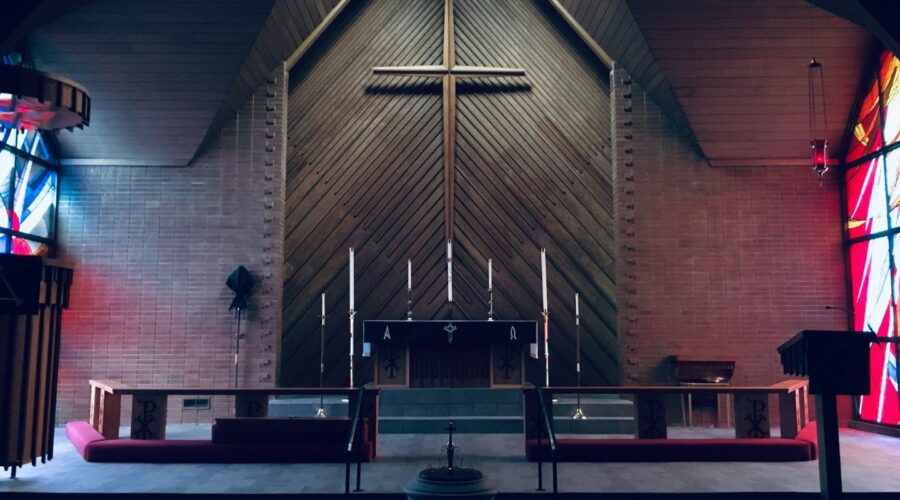
Discover the Majestic Grandeur of St. Charles Church: A Historic and Architectural Masterpiece
Embark on a captivating journey through the hallowed halls of St. Charles Church, a beloved landmark that has stood as a testament to faith and architectural ingenuity for centuries. This comprehensive blog delves into the rich history, stunning architecture, and captivating features of this magnificent edifice, leaving you in awe of its enduring legacy.
Historical Background
The story of St. Charles Church unfolds in the heart of Vienna, Austria, a city renowned for its cultural treasures. Its origins trace back to the 17th century when Emperor Charles VI, seeking to express gratitude for the birth of his heir, commissioned the construction of a monumental church. The grand vision was entrusted to the renowned Baroque architect Johann Bernhard Fischer von Erlach, who embarked on creating a masterpiece that would leave an indelible mark on Vienna’s skyline.
Jesuit Legacy
The history of St. Charles Church is inextricably intertwined with the Society of Jesus, also known as the Jesuits. Emperor Charles VI entrusted the Jesuits with the task of managing the church, recognizing their dedication to education and spirituality. The Jesuits have played a significant role in shaping the character and legacy of St. Charles Church, leaving a lasting impact on its architectural design and the spiritual lives of its congregants.
Architectural Marvel
St. Charles Church stands as a testament to the ingenuity and artistry of Baroque architecture. Its imposing exterior, adorned with intricate carvings and sculptures, hints at the grandeur that awaits within. Upon entering the church, visitors are greeted by a breathtaking interior of soaring columns, opulent frescoes, and an abundance of natural light.
Monumental Dome
The most striking feature of St. Charles Church is undoubtedly its majestic dome. Rising high above the nave, the dome is a masterpiece of engineering and artistry. Adorned with intricate frescoes depicting scenes from the life of St. Charles Borromeo, the patron saint of the church, the dome creates an awe-inspiring effect that leaves visitors spellbound.
Intricate Frescoes
The interior of St. Charles Church is a canvas for breathtaking frescoes that adorn the walls and ceilings. These exquisite artworks, created by renowned artists such as Johann Michael Rottmayr and Daniel Gran, depict biblical scenes, allegorical figures, and the life of the church’s patron saint. Each fresco tells a captivating story, inviting visitors to delve into the depths of faith and spirituality.
Captivating Features
Beyond its grand architecture, St. Charles Church is home to several captivating features that enhance its allure.
- Opulent Altars: The church boasts several ornate altars, each dedicated to a different saint or aspect of Catholic devotion. The high altar, a masterpiece of Baroque artistry, is adorned with intricate carvings, sculptures, and shimmering gold leaf.
- Historical Organs: St. Charles Church is renowned for its magnificent organs, which have played a central role in its musical heritage. The main organ, built by Johann David Sieber, is a masterpiece of craftsmanship, featuring over 4,000 pipes and a breathtaking sound.
- Imperial Crypt: Located beneath the church, the Imperial Crypt is the final resting place of several members of the Habsburg dynasty, including Emperor Charles VI and Empress Maria Theresa. Adorned with marble sarcophagi and ornate decorations, the crypt offers a glimpse into the lives and legacies of Vienna’s former rulers.
Visiting Information
Planning a visit to St. Charles Church is a must for any traveler interested in history, architecture, or spirituality. Here’s what you need to know:
- Location: St. Charles Church is located in Karlsplatz, in the heart of Vienna, Austria.
- Hours: The church is open daily from 9:00 AM to 6:00 PM.
- Admission: Admission to the church is free of charge. However, there may be a small fee to access certain areas, such as the Imperial Crypt.
- Dress Code: Visitors are expected to dress respectfully when entering the church, covering their shoulders and knees.
- Guided Tours: Guided tours of the church are available for a fee. These tours provide an in-depth look at the history, architecture, and captivating features of St. Charles Church.
Legacy and Impact
Throughout its long history, St. Charles Church has played a significant role in the cultural and spiritual life of Vienna. Its stunning architecture has inspired countless artists and architects, while its religious significance has drawn pilgrims and worshippers for centuries.
Today, St. Charles Church remains a beloved landmark, attracting visitors from around the world. Its awe-inspiring beauty, captivating features, and enduring legacy make it a must-see destination for anyone seeking a glimpse of Vienna’s rich history and architectural heritage.
Table 1: Key Features of St. Charles Church Feature Description Architect Johann Bernhard Fischer von Erlach Style Baroque Construction dates 1716-1737 Height of dome 72 meters (236 feet) Number of organs 4 Number of bells 6 Patron saint St. Charles Borromeo We hope this comprehensive guide has provided you with a deeper understanding of St. Charles Church, its captivating history, stunning architecture, and enduring legacy. Whether you are a history buff, an architecture enthusiast, or a traveler seeking spiritual inspiration, a visit to St. Charles Church is an experience that will leave you awestruck and humbled.
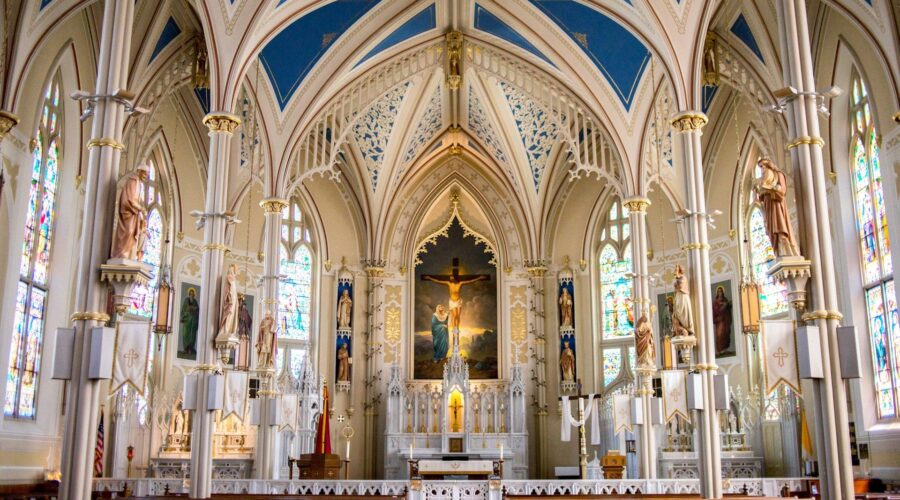
Discover the Enchanting History and Inspiring Legacy of St. Bernadette Church
A Majestic Sanctuary in the Heart of Lourdes
Nestled amidst the picturesque foothills of the Pyrenees in Lourdes, France, St. Bernadette Church stands as a testament to faith, healing, and spiritual transformation. Originally constructed as a chapel in 1866, the church was consecrated in 1871 and underwent significant expansion in the following decades. Today, St. Bernadette Church is one of the most iconic religious landmarks in the world, welcoming millions of pilgrims each year.

The Miraculous Apparitions
The history of St. Bernadette Church is inextricably intertwined with the remarkable apparitions experienced by St. Bernadette Soubirous in 1858. A young peasant girl, Bernadette witnessed 18 visions of a beautiful lady who identified herself as the Immaculate Conception. These apparitions culminated in a miraculous spring emerging from the ground, which has since become a symbol of healing and hope for millions.
A Shrine for the Sick and a Place of Pilgrimage
In the decades following the apparitions, Lourdes became a renowned destination for pilgrims seeking spiritual solace and physical healing. The waters of the spring are believed to possess miraculous properties, and countless individuals have reported miraculous cures after bathing in or drinking the water. St. Bernadette Church serves as a sanctuary for the sick, offering them a place for prayer, reflection, and hope.
Architectural Splendor and Artistic Treasures
St. Bernadette Church is an architectural masterpiece that reflects the grandeur of its purpose. The church features a Neo-Gothic design with towering spires, intricate stained-glass windows, and opulent marble interiors. It houses numerous artistic treasures, including statues, paintings, and mosaics that depict scenes from the life of St. Bernadette and the history of Lourdes.
Guided Tours and Spiritual Programs
Visitors to St. Bernadette Church can embark on guided tours that provide insights into the history, architecture, and significance of this sacred site. The church also offers a range of spiritual programs, including Masses, prayer services, and adoration of the Blessed Sacrament.
Conclusion
St. Bernadette Church is more than just a religious building; it is a living testament to the power of faith, hope, and the miraculous. Whether you are a pilgrim seeking spiritual renewal, a history buff, or simply an admirer of beautiful architecture, a visit to this iconic sanctuary is an unforgettable experience that will leave a lasting impression.
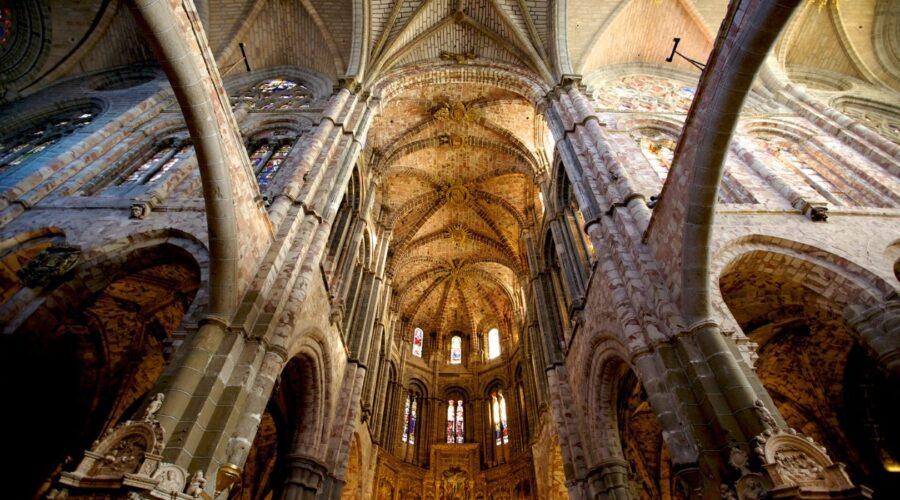
St Philips Church: A Majestic Beacon of Faith and History
A Glimpse into its Rich Past
Nestled in the heart of Birmingham, St Philip’s Church stands as a testament to the city’s vibrant religious heritage. Its story begins in 1715, when the need arose for a new place of worship in the rapidly expanding town. The initial church, built on the site of the present structure, served the community for over a century until its replacement in 1805.
The current church, designed by the renowned architect Robert Smirke, was consecrated in 1815. Its majestic neoclassical facade, adorned with elegant columns and a grand pediment, reflects the architectural sensibilities of the era. The interior of the church is equally impressive, with its high vaulted ceilings, intricate carvings, and beautiful stained-glass windows.
A Place of Worship and Community
Throughout its existence, St Philip’s Church has been a central hub for religious observation and community engagement. It has witnessed countless baptisms, marriages, and funerals, serving as a spiritual anchor for generations of Birmingham residents.
Beyond its religious significance, St Philip’s Church has played a significant role in the city’s cultural and social life. It has hosted concerts, exhibitions, and public lectures, fostering a sense of community pride and cultural richness.
Architectural Splendor
St Philip’s Church is not only a sacred space but also an architectural masterpiece. Its neoclassical design incorporates elements of Greek and Roman architecture, creating a harmonious and imposing structure.
Key Architectural Features:
- Neoclassical facade with Corinthian columns and pediment
- Grand entrance portico with arched doorway
- High vaulted ceilings supported by slender columns
- Intricate carvings and moldings throughout the interior
- Beautiful stained-glass windows depicting biblical scenes
Civic and Historical Significance
St Philip’s Church is inextricably linked to the development of Birmingham. It stands as a witness to the city’s industrial growth and social transformation. The church has been recognized for its architectural and historical importance, earning Grade I listed status in 1950.
Its location in the city center makes it a prominent landmark, visible from afar. Its steeple, soaring above the surrounding buildings, has served as a beacon for travelers and a symbol of religious faith for centuries.
Restoration and Preservation
St Philip’s Church has undergone several restoration projects over the years to maintain its structural integrity and architectural beauty. In the early 20th century, major repairs were carried out to address the damage caused by industrial pollution.
In recent years, a comprehensive restoration program has been undertaken to safeguard the church’s long-term future. This includes meticulous cleaning and repair of the exterior and interior, as well as the restoration of the stained-glass windows.
Visiting St Philip’s Church
St Philip’s Church is open to the public for worship and visitation. Visitors can admire its architectural grandeur, explore its rich history, and experience the vibrant community that calls it home.
Visiting Hours:
- Monday to Saturday: 10:00 am – 4:00 pm
- Sunday: 12:00 pm – 4:00 pm
Guided tours of the church are available by appointment. To schedule a tour, please contact the church office at (0121) 236 5498 or visit their website at www.stphilipschurchbirmingham.org.
Conclusion
St Philip’s Church is a magnificent edifice that stands as a testament to the enduring power of faith and the resilience of a city. Its architectural beauty, historical significance, and vibrant community make it a true gem in the heart of Birmingham.
Whether you are seeking spiritual solace, admiring architectural grandeur, or exploring the rich history of the city, St Philip’s Church offers an unforgettable experience. Its doors are open to all who seek inspiration and a connection to the past.
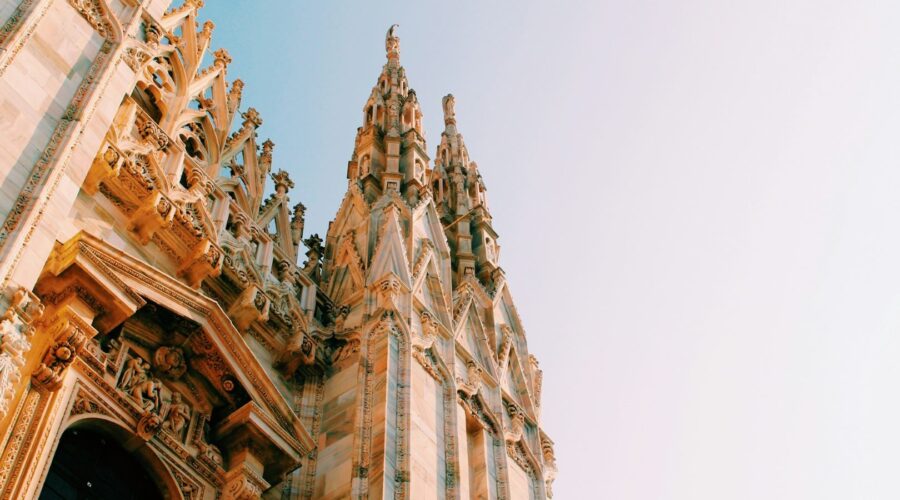
St. Boniface: The Apostle of Germany and Patron Saint of Mariners
Early Life and Education
Boniface was born Winfrid around 675 AD in Crediton, England. He received a thorough education at the Benedictine monastery of Exeter, where he studied theology, grammar, and rhetoric. His thirst for knowledge led him to pursue further studies at the abbey of Nursling, where he excelled in his studies and was ordained a priest in 710 AD.
Missionary Work in Germany
In 719 AD, Boniface heeded the call to spread Christianity among the pagan tribes of Germany. With the blessing of Pope Gregory II, he embarked on a dangerous and arduous mission. He traveled through Thuringia, Hesse, and Bavaria, preaching the Gospel and baptizing thousands.
Felling the Sacred Oak of Thor
One of Boniface’s most famous acts was the felling of the sacred oak of Thor at Geismar, near Kassel. This sacred tree was the centerpiece of pagan worship in the region. By cutting it down, Boniface symbolized the triumph of Christianity over paganism.
Establishment of Dioceses and Monasteries
As his missionary work progressed, Boniface founded several dioceses, including those of Mainz, Würzburg, and Paderborn. He also established monasteries and churches throughout Germany, providing centers for worship, education, and social services.
Archbishop and Martyr
In 732 AD, Boniface was appointed archbishop of Mainz by Pope Gregory III. As archbishop, he continued his missionary work and promoted reforms within the Frankish Church. In 754 AD, while on a confirmation tour in Friesland, Boniface and his companions were attacked by a mob of angry pagans. They were martyred on June 5, 754 AD.
Patron Saint of Mariners
Boniface is also known as the patron saint of mariners. This connection stems from a legend that during a storm, he calmed the waters by invoking the Trinity. Sailors and fishermen often pray to St. Boniface for protection and safe passage.
Legacy and Impact
St. Boniface’s legacy is immense. He is considered the “Apostle of Germany” for his role in converting the pagan tribes to Christianity. His missionary work paved the way for the establishment of the Christian church in Germany and laid the foundation for the development of Western civilization in central Europe.
Churches and Relics
- Mainz Cathedral houses the tomb of St. Boniface.
- Fuldatal Monastery, near Kassel, is built on the site of Boniface’s martyrdom.
- Fulda Cathedral contains relics of St. Boniface.
- Numerous churches throughout Germany are dedicated to St. Boniface.
Feast Day and Iconography
St. Boniface’s feast day is celebrated on June 5th. He is often depicted in art as a bishop holding a sword or a book, symbolizing his role as a missionary and martyr.
Conclusion
St. Boniface was a courageous and dedicated missionary who played a pivotal role in the spread of Christianity in Germany. His legacy continues to inspire and guide Christians today. As the patron saint of mariners, he is revered by sailors and fishermen who seek his protection on the open seas.
Table of Key Dates in St. Boniface’s Life Date Event c. 675 Birth in Crediton, England 710 Ordination as a priest 719 Embarks on missionary work in Germany 723 Fells the sacred oak of Thor at Geismar 732 Appointed archbishop of Mainz 754 Martyrdom in Friesland Visit the Catholic Online website for more information on St. Boniface.

Mary, Mother of the Church: A Symbol of Grace and Intercession
Introduction
Mary, the mother of Jesus Christ, holds a prominent place in the Catholic Church. She is revered as the Mother of God and as a model of faith and devotion. The title “Mother of the Church” was officially proclaimed by Pope Paul VI in 1964. It signifies Mary’s role as a spiritual mother to all Christians, not just to her son, Jesus.
Scriptural Basis for Mary’s Role
The biblical foundation for Mary’s role as Mother of the Church can be found in several passages.
John 19:26-27
At the foot of the cross, Jesus entrusts Mary to his disciple John, saying, “Here is your mother.” This act symbolizes Mary’s extended maternal care to all who believe.
Acts 1:14
After the Ascension of Jesus, Mary is depicted as praying with the Apostles. This suggests her continued presence and intercession in the early Church.
Mary’s Intercession
One of the central beliefs associated with Mary’s title as Mother of the Church is her role as an intercessor before God. Catholics believe that Mary intercedes on their behalf, presenting their prayers to her son, Jesus.
Examples of Intercession
Throughout history, there have been numerous accounts of Mary’s intercession, including:
- The wedding at Cana (John 2:1-11)
- The Battle of Lepanto in 1571
- The apparitions at Fatima and Lourdes
Mary’s Example of Faith
In addition to her role as an intercessor, Mary is also seen as a model of faith and devotion. Her “fiat,” or “yes,” to God’s plan for her life (Luke 1:38), exemplifies her unwavering trust in God.
Mary’s faith was tested throughout her life, particularly at the crucifixion of her son. Her steadfastness in the face of adversity is an inspiration to all Christians.
Lessons from Mary’s Faith
We can learn several valuable lessons from Mary’s example of faith:
- Trust in God’s plan, even when it seems difficult.
- Be open to God’s call in our lives.
- Persevere in faith, even in the midst of trials.
Liturgical Significance
The Church celebrates the feast of Mary, Mother of the Church, on the Monday after Pentecost. This feast is a time for Catholics to reflect on Mary’s role and to ask for her intercession.
Mary’s name is also included in the Canon of the Mass, the central prayer of the Catholic Mass. This inclusion acknowledges her special place in the life of the Church.
Conclusion
The title “Mary, Mother of the Church” is a testament to her profound role in the life of all Christians. She is a symbol of grace, intercession, and faith. By following her example and seeking her intercession, we can grow closer to Christ and experience his love and mercy more fully.